Resonating Space (Mannheim) 2020
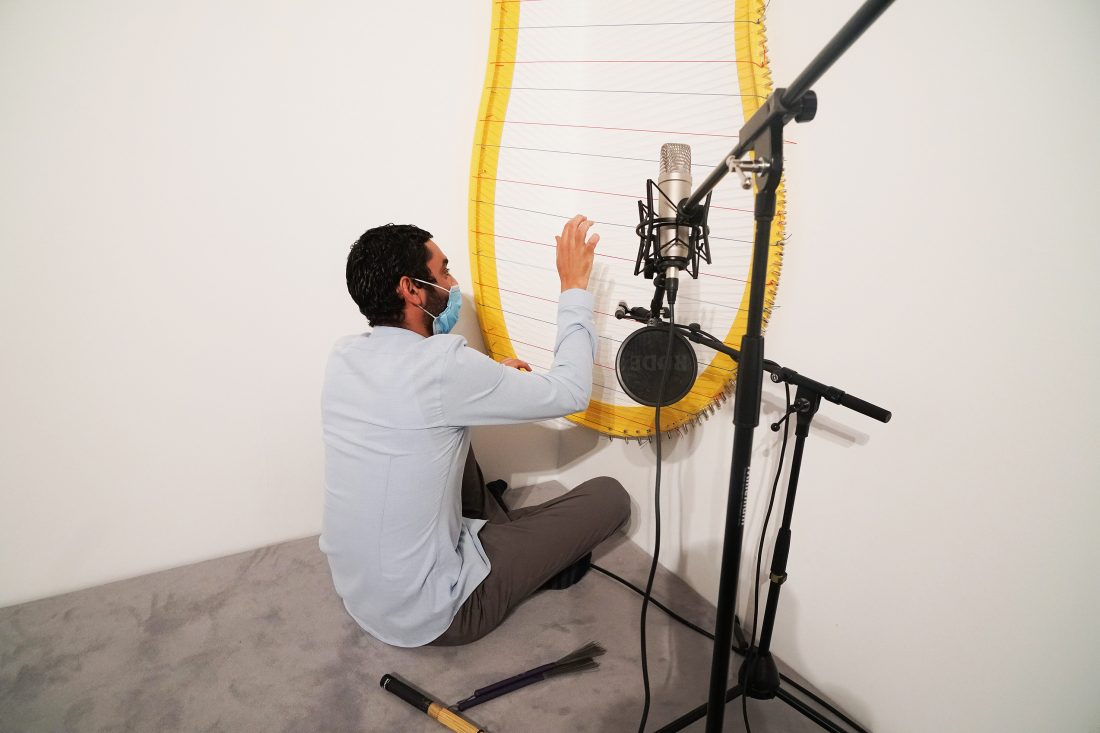
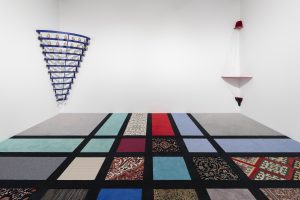
Installation view, Umbruch, Kunsthalle Mannheim
Corner-Bells, powder coated steel, 66 bronze bells in four sizes
H 225 x W 110 cm x D 110 cm
Corner-Cello, powder coated steel, cello mechanism, stings
H 310 x W 66 x D 66 cm
Sound-Carpet, various carpets, 650 x 650 cm
(photo credit: Rainer Diehl)
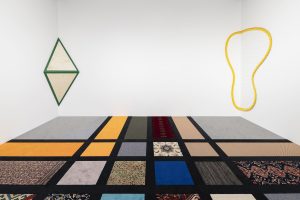
Corner-Drum, powder coated steel, leather
H 247 x W 105 x D 53 cm
Corner-Harp, powder coated steel, harp mechanism, stings
H 280 x W 135 x D 57 cm
Sound-Carpet 650 x 650 cm
(photo credit: Rainer Diehl)
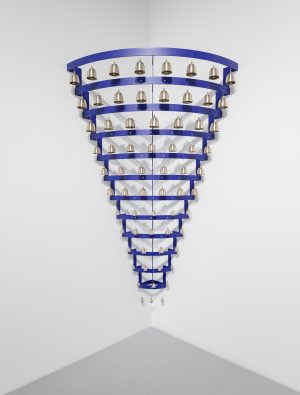
Corner-Bells
Corner-Bells, powder coated steel, 66 bronze bells in four sizes
H 225 x W 110 cm x D 110 cm
(photo credit: Rainer Diehl)
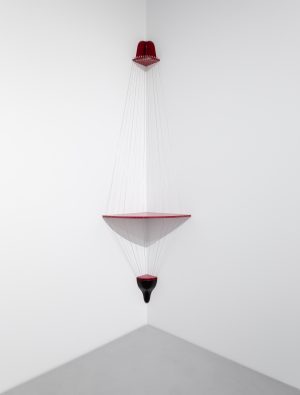
Corner-Cello
Corner-Cello, powder coated steel, cello mechanism, stings
H 310 x W 66 x D 66
(photo credit: Rainer Diehl)
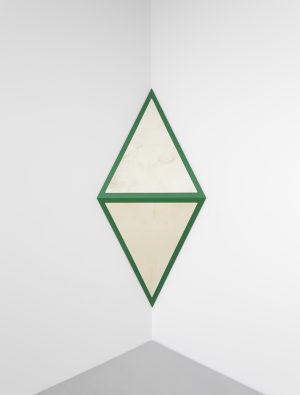
Corner-Drum
Corner-Drum, powder coated steel, leather
H 247 x W 105 x D 53 cm
(photo credit: Rainer Diehl)
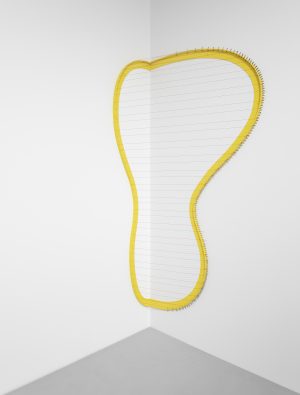
Corner-Harp
powder coated steel, harp mechanism, stings, H 280 x W 135 x D 57 cm
(photo credit: Rainer Diehl)
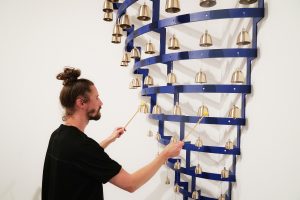
Activation of corner instruments by musicians
(photo credit: Heiko Daniels)
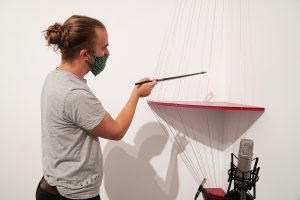
(photo credit: Heiko Daniels)
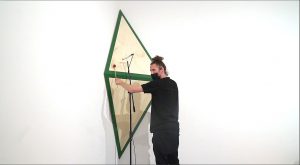
(photo credit: Heiko Daniels)

(photo credit: Heiko Daniels)
The sound emanating from Nevin Aladağ’s Music Rooms is unconventional, magical, and surprisingly harmonious. The artist lends her objects their own voice, turning urban spaces into sound spaces. Throughout, the music and the sculptural body remain connected to one another, and together generate experimental, individual compositions with a reference to their place of origin. For the exhibition Upheaval at the Kunsthalle Mannheim, Aladağ has now designed a self-contained Resonance Room in which the instruments are directly integrated into the four corners. The room becomes a resonance space and itself plays music; an abstract corner-cello reduced to individual strings, a corner-harp in the form of an ancient lyre, an abstract corner-drum, as well as corner bells arranged in the shape of a cone, while the floor of the quadratic room is covered with a sound carpet.
Drawing on her own biography, music, dance, and rhythm play an important role for the artist, forming the focus of her artistic work. In her Music Rooms, she references local actualities, musical traditions, or personal experiences. Drawing on the courtly music room of the 18th and 19th century, which were used as both private refuges and representational spaces, Aladağ positions her interpretation in the public sphere, awakening it to independent musical activity. For her first sculptural works of this type (Istanbul 2014, Brussels 2015) she converted secondhand furniture into functioning instruments, which nevertheless retained their original character as objects: “I like the way the pieces of furniture receive a voice and develop their own identity. The chair does not sound like a lyre, but like a chair that wants to sound like a lyre,” stated the artist. Together with instrument builders she created harps from chairs, drums from tables, string instruments from armchairs and newspaper stands, which were not initially played. For her Music Room at the documenta 14 in Athens and Kassel in 2017 she drew the objects from local flea markets and antique shops. For the first time the installation was “activated” by trained musicians by means of fascinating, melodic improvisations. This inspired Aladağ to produce even more abstract, cubistic instrument sculptures, most recently her work group Resonators from 2018—polyphonic objects made from harps, mandolins, acoustic and bass guitars, percussion, glockenspiels, and didgeridoos. The fields of tension and combination possibilities within the sculpture generated by the sounds of individual cultural contexts are thus united in a common resonance body, a “utopian object.” In the series Social Fabric, begun in 2017, the artist, alongside musical references, combines carpets made from textiles from all sources, epochs, and styles to create cubistic-ornamental mosaics, engaging in an intense exploration of their materiality. In the Mannheim sound carpet the theme of music is integrated for the first time with intersecting staves. Referencing the prestigious tapestries of past ages, and with the aid of the instruments, a historical context is created: Thus the corner-bells create the form of a representative chandelier, and together with the harp with its courtly connotations, appear to conjure up the image of the archetypal music room.
The link to the city of Mannheim is established by concerts from three local music groups with different cultural backgrounds, thus lending the Resonance Room a new musical spectrum with their artistic diversity. As a result a close connection to the musical city of Mannheim is formed, whose intercultural character is also represent- ed visually by the mosaic carpet. Finally, the four corners of the room pay reference to Mannheim as the City of Squares as well as the cube structure of the Kunsthalle’s new building, which in turn references the city layout. (text by Eva Maria Schütz)








